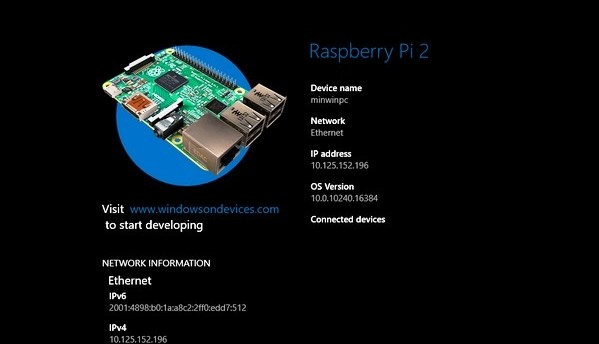Windows 10 IoT core
August 12, 2015
on
on

Following on from the release of the preview version of the "Internet of Things" version of Windows 10 in late April Microsoft has now released the Windows 10 IoT Core, firmly targeted at the maker community, to run on the Raspberry Pi 2 and Intel's own MinnowBoard Max. There are many new bells and whistles including support for both WiFi and Bluetooth connectivity and features giving:
• Improved support for Python and Node.js, including a new Express Node.js project template
• A 8 to 10 times boost on the Raspberry Pi 2 GPIO performance
• Support for analog-to-digital converters (ADC) and pulse-width modulation (PWM) via breakout boards and ICs
• New Universal Windows Platform (UWP) APIs give apps easy control over system management features like time zone and network connections
To underline its new open approach Microsoft are embracing the maker movement by providing support to many open source options. All of their IoT samples are available on Github along with documentation and a growing set of libraries and helper tools. The project system and runtime support for Python and Node.js is also available open source on Github and when the samples evolve into full projects, they will be made available on Hackster.io.
They haven’t overlooked Arduino either so that now it is easier to talk to Arduino boards from Windows and even for Arduinos to talk to Windows devices as if they were virtual shields. To find out more read the Microsoft announcement.
• Improved support for Python and Node.js, including a new Express Node.js project template
• A 8 to 10 times boost on the Raspberry Pi 2 GPIO performance
• Support for analog-to-digital converters (ADC) and pulse-width modulation (PWM) via breakout boards and ICs
• New Universal Windows Platform (UWP) APIs give apps easy control over system management features like time zone and network connections
To underline its new open approach Microsoft are embracing the maker movement by providing support to many open source options. All of their IoT samples are available on Github along with documentation and a growing set of libraries and helper tools. The project system and runtime support for Python and Node.js is also available open source on Github and when the samples evolve into full projects, they will be made available on Hackster.io.
They haven’t overlooked Arduino either so that now it is easier to talk to Arduino boards from Windows and even for Arduinos to talk to Windows devices as if they were virtual shields. To find out more read the Microsoft announcement.
Read full article
Hide full article



Discussion (0 comments)